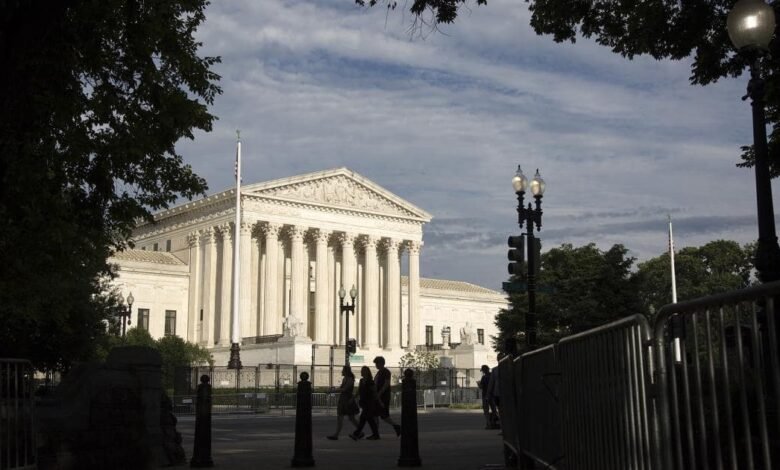
The Chevron Supreme Court doctrine plays a critical role in the legal framework governing the relationship between courts and federal agencies in the United States. It establishes how much deference courts should give to government agencies when they interpret ambiguous statutes. This doctrine has shaped administrative law for decades, empowering regulatory agencies to carry out their functions without excessive interference from the judiciary. However, recent developments suggest the Chevron doctrine may be revisited by the U.S. Supreme Court, sparking significant debate about its future and potential implications.
This article provides a comprehensive breakdown of the Chevron Supreme Court doctrine, how it emerged, its importance in administrative law, and why its future is now under scrutiny.
What Is the Chevron Doctrine?
The Chevron Supreme Court doctrine originates from the 1984 Supreme Court case Chevron U.S.A., Inc. v. Natural Resources Defense Council, Inc. In this landmark ruling, the court established a two-step framework for determining when courts should defer to a government agency’s interpretation of a statute it administers.
The Two-Step Test:
- Step One: The court first determines whether the statute in question is clear. If the statute is unambiguous, the court applies the law as written.
- Step Two: If the statute is ambiguous, the court evaluates whether the agency’s interpretation is reasonable. If it is, the court defers to the agency’s interpretation, even if the court might have reached a different conclusion.
This two-step process became the backbone of the Chevron Supreme Court doctrine, giving federal agencies leeway to interpret laws that govern their work, provided their interpretations are not unreasonable.
The Significance of the Chevron Doctrine
The Chevron Supreme Court ruling profoundly influenced the relationship between courts and federal agencies. It recognized that agencies possess specialized expertise in their fields, making them better equipped than courts to interpret complex regulatory statutes. This deference allows agencies to function more efficiently, adapt regulations to changing circumstances, and exercise discretion in their enforcement of laws.
Some of the areas where the Chevron doctrine has had a profound impact include:
- Environmental Regulations: Agencies like the Environmental Protection Agency (EPA) rely on Chevron’s deference to interpret environmental statutes when crafting rules on air pollution, water quality, and hazardous waste.
- Healthcare: The Department of Health and Human Services (HHS) uses the doctrine to implement and modify healthcare regulations, including Medicare and Medicaid provisions.
- Labor Law: The National Labor Relations Board (NLRB) and other labor-related agencies often use Chevron deference when creating or enforcing labor policies.
However, the doctrine has also faced criticism. Opponents argue that it gives too much power to unelected bureaucrats, reducing the role of courts in safeguarding the separation of powers.
Criticisms and Calls for Change
The Chevron Supreme Court doctrine has been increasingly criticized by conservatives, libertarians, and some legal scholars. They argue that the doctrine undermines the judicial branch’s role in interpreting laws and places excessive power in the hands of federal agencies.
Some of the main arguments against the Chevron doctrine include:
- Erosion of Judicial Authority: Critics claim that Chevron’s deference weakens the courts’ role in interpreting statutes, creating an imbalance between the judiciary and executive branches.
- Accountability Issues: Agencies, unlike elected officials, are not directly accountable to the public, leading to concerns about the unchecked power they wield under Chevron’s deference.
- Complexity and Ambiguity: Detractors argue that the doctrine encourages Congress to draft vague laws, knowing that agencies will interpret them as needed. This can result in an uneven application of laws.
These criticisms have led to a growing movement to curtail or overturn the Chevron doctrine. Some justices on the U.S. Supreme Court have also expressed doubts about the doctrine’s continued relevance, signaling the potential for significant changes shortly.
Why Is the Chevron Doctrine Back in the Spotlight?
The Chevron Supreme Court doctrine has gained renewed attention as the U.S. Supreme Court prepares to hear cases that could directly address or reconsider the precedent set in Chevron U.S.A., Inc. v. Natural Resources Defense Council, Inc.
In particular, conservative justices on the Court have voiced skepticism about the doctrine, suggesting it might be time to revisit or modify it. Justice Neil Gorsuch, in particular, has been an outspoken critic of Chevron, arguing that courts should not abdicate their duty to interpret laws.
Cases such as these raise the question: Will the Chevron Supreme Court doctrine be overruled, or will it be revised to limit the scope of deference given to administrative agencies?
Potential Impact of Changes to the Chevron Doctrine
If the Chevron Supreme Court doctrine is overturned or significantly revised, the shift could have wide-ranging consequences across multiple sectors. Regulatory agencies would face increased challenges in defending their rulemaking and enforcement decisions, and courts would have greater authority in interpreting statutes.
Some potential outcomes include:
- More Judicial Oversight: Courts would play a larger role in interpreting ambiguous statutes, reducing the discretion that agencies currently enjoy.
- Slower Regulatory Processes: If agencies have less authority to interpret statutes independently, the rulemaking process could become slower and more cumbersome.
- Increased Legal Challenges: With less deference granted to agencies, businesses, and individuals may feel more empowered to challenge regulatory decisions, leading to more litigation.
- The shift in Power Dynamics: Revising or overturning the Chevron doctrine could fundamentally alter the balance of power between the executive and judicial branches of government.
What’s Next for the Chevron Doctrine?
The Chevron Supreme Court case remains one of the most important legal precedents in administrative law. However, its future is uncertain. The U.S. Supreme Court may soon reshape the doctrine in ways that could affect how agencies operate and how laws are enforced.
If the Court does decide to overturn or limit Chevron, it will signal a shift towards a more judiciary-centered approach to statutory interpretation. On the other hand, maintaining the doctrine would reaffirm the importance of agency expertise in complex regulatory areas.
Whether the doctrine is overturned, limited, or preserved, the implications will ripple across industries, government agencies, and the legal landscape for years to come.
Conclusion
The Chevron Supreme Court doctrine has served as a cornerstone of administrative law for nearly four decades, shaping the way courts interact with regulatory agencies. While the doctrine has provided consistency and empowered agencies to interpret ambiguous laws, it has also attracted significant criticism. As the U.S. Supreme Court considers revisiting Chevron, the legal community, government agencies, and industries are closely watching to see how potential changes could alter the balance of power between courts and agencies.
The outcome of this debate will not only impact future regulatory decisions but could also redefine the boundaries between the judiciary and executive branches of government. Whether Chevron remains intact or is significantly modified, it is clear that the decision will have lasting consequences for the functioning of administrative law in the United States.




